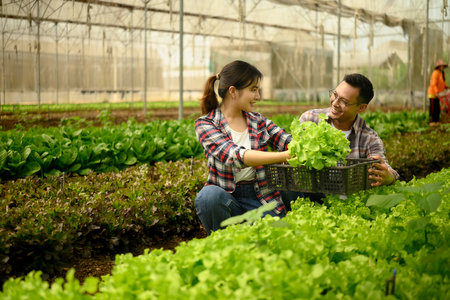Introduction to Smart Technology in UK Greenhouses
The integration of smart technology into greenhouse management is rapidly transforming agricultural practices across the United Kingdom. With the nation’s unpredictable weather patterns and relatively short growing seasons, British growers have long sought innovative ways to optimise crop yields and resource efficiency. Today, automated systems for ventilation and climate control are proving to be game changers, offering precision and reliability that traditional methods often lack. By harnessing sensors, data analytics, and real-time monitoring tools, UK greenhouse operators are able to respond proactively to fluctuating temperature, humidity, and light levels—key factors shaped by the country’s temperate maritime climate. As a result, smart technology is not only helping growers adapt to local environmental challenges but also enabling them to meet sustainability goals and rising consumer expectations for quality produce throughout the year.
2. Principles of Automated Ventilation Systems
Automated ventilation systems form the backbone of climate control in modern British greenhouses, responding intelligently to ever-changing weather patterns and ensuring optimal plant health. At their core, these systems utilise a combination of sensors, actuators, and controllers to regulate airflow, temperature, and humidity with minimal manual intervention. The primary goal is to maintain an environment that is both productive for crops and energy efficient—a critical consideration in the UK’s often unpredictable climate.
Key technological components include:
| Component | Function | Relevance to British Conditions |
|---|---|---|
| Temperature Sensors | Continuously monitor internal and external temperatures | Essential for coping with sudden cold snaps or unexpected heatwaves |
| Humidity Sensors | Detect and adjust moisture levels within the greenhouse | Helps prevent fungal diseases common in damp UK weather |
| CO₂ Sensors | Track carbon dioxide concentrations for plant growth optimisation | Supports efficient photosynthesis during overcast periods |
| Automated Louvres & Vents | Open or close based on sensor data to modulate airflow | Responds rapidly to shifting wind and rain conditions typical of the UK |
| Central Control Unit | Integrates sensor inputs and executes ventilation strategies | Allows for remote monitoring and fine-tuning via mobile or desktop interfaces—handy for British growers managing several sites or working off-site due to inclement weather |
The operation principle is straightforward: when temperature or humidity readings exceed preset thresholds—perhaps due to a rare sunny spell or an incoming Atlantic front—the system triggers vents or fans to restore balance. This automation not only alleviates labour demands but also minimises energy waste by tailoring interventions precisely to real-time needs. Furthermore, intelligent scheduling and predictive algorithms can be integrated, learning from local meteorological trends (like persistent drizzle or sharp frosts) to anticipate necessary adjustments before conditions become suboptimal.

3. Advanced Climate Control Strategies for British Growers
Modern British greenhouses are increasingly embracing advanced climate control technologies to address the unique challenges posed by the UK’s variable weather and diverse crop requirements. Smart systems now integrate a range of environmental sensors—measuring temperature, humidity, CO2 levels, and light intensity—that feed real-time data into centralised management platforms. These platforms employ data-driven algorithms to optimise the growing environment, ensuring that crops such as tomatoes, cucumbers, and salad leaves receive tailored care regardless of external conditions.
Sensor Networks for Precision Monitoring
Networked sensors form the backbone of automated climate control. By continuously collecting granular data from across the greenhouse, growers can detect microclimate variations and respond with targeted interventions. For example, soil moisture probes can inform irrigation systems when to activate, while leaf temperature sensors help prevent heat stress in sensitive crops. This approach is particularly valuable in the UK, where cloudy spells or sudden cold snaps can impact plant development if not managed swiftly.
Automated Ventilation and Airflow Management
Ventilation remains a cornerstone of effective climate regulation. Automated louvre windows and ridge vents, controlled by environmental software, adjust airflow in response to sensor feedback. In summer, these systems prevent overheating during unseasonably warm days; in winter, they balance fresh air intake with energy efficiency to mitigate heat loss. British growers benefit from these responsive solutions, as they reduce manual labour while safeguarding crop quality through consistent climate stability.
Data-Driven Decision Making
The integration of historic weather records and live meteorological data allows growers to anticipate external changes and adjust settings proactively. Advanced analytics can suggest optimal setpoints for heating, ventilation, and shading based on both local conditions and specific crop phenology. As sustainability gains importance across the UK’s horticultural sector, these technologies also contribute to energy savings and reduced carbon footprint—a win-win for commercial viability and environmental stewardship.
4. Benefits and Challenges of Integration
Integrating smart technology such as automated ventilation and climate control into modern British greenhouses presents a compelling mix of opportunities and obstacles. On the one hand, these systems promise significant improvements in crop yield, sustainability, and operational efficiency. On the other, British growers must contend with practical challenges unique to local conditions, regulations, and infrastructure.
Potential Gains for UK Growers
| Aspect | Potential Benefit |
|---|---|
| Yield | Consistent environmental control leads to optimised plant growth and higher quality produce throughout the year. |
| Sustainability | Precise management reduces water and energy waste, supporting UK goals for reduced carbon emissions and sustainable agriculture. |
| Operational Efficiency | Automation minimises manual labour, streamlines monitoring, and allows for data-driven decision making, freeing up time for strategic tasks. |
Practical Hurdles in Implementation
Despite the clear benefits, integrating these technologies is not without its complications. A key challenge for many British growers is the initial capital investment required—hardware, software, and retrofitting older glasshouses can be cost-prohibitive. Furthermore, adapting to new systems often demands technical upskilling, which may not be readily accessible in rural areas. There are also issues relating to data privacy and compliance with UK-specific agricultural standards that must be addressed.
Key Challenges Overview
| Challenge Area | Description/Impact | Potential Solutions |
|---|---|---|
| Upfront Costs | High initial investment can deter small-scale or family-run operations. | Seeking grants from DEFRA or local councils; phased implementation strategies. |
| Technical Skills Gap | Lack of familiarity with digital systems among existing workforce. | Partnering with tech providers for training; engaging local colleges for skills development. |
| System Reliability & Support | Concerns over breakdowns or lack of local support services. | Selecting suppliers with UK-based support; robust maintenance contracts. |
| Regulatory Compliance | Navigating complex UK/EU rules on data use and agricultural practices. | Liaising with industry bodies for guidance; ensuring systems meet all legal requirements. |
A Balanced Perspective for Future Adoption
The integration of smart climate control technologies offers tangible rewards but must be approached strategically within the context of British horticulture. Understanding both the potential gains and the hurdles enables growers to make informed decisions about adoption—balancing innovation with practicality as they navigate the evolving landscape of modern greenhouse production in the UK.
5. Case Studies from UK Greenhouse Operations
Across the UK, a growing number of horticulturists are embracing automated ventilation and climate control systems to tackle the challenges of weather variability, energy efficiency, and sustainable production. These case studies illustrate how British growers are not only adopting but also innovating with smart technologies tailored for local conditions.
Tomato Growers in Kent: Maximising Yields with Data-Driven Control
One prominent example comes from Kent, where a large-scale tomato producer implemented a fully automated system that integrates ventilation, heating, and humidity sensors. This setup is managed through a central dashboard, allowing staff to monitor greenhouse conditions in real time and make data-backed adjustments. By leveraging predictive algorithms based on weather forecasts, the operation has significantly reduced energy consumption while maintaining optimal fruit quality. The result is a more resilient business model and improved crop consistency throughout the year.
Ornamental Plant Nursery in Cheshire: Improving Sustainability
A family-run nursery in Cheshire invested in an adaptive climate control solution to support its range of ornamental plants, which require precise temperature and moisture levels. Through automated roof vents and misting systems linked to environmental sensors, the nursery cut water usage by 20% and achieved better disease control. The owners note that automating these processes has freed up time for staff to focus on plant care rather than manual monitoring, ultimately enhancing both productivity and sustainability.
Strawberry Production in Scotland: Tackling Regional Challenges
In Scotland’s variable climate, one strawberry grower faced persistent issues with humidity-induced mould and uneven ripening. The introduction of an intelligent ventilation system—capable of responding rapidly to shifts in internal and external conditions—has mitigated these problems. Automated fan controls and heat retention screens have enabled consistent airflow and temperature regulation even during unpredictable weather spells, resulting in healthier plants and extended harvesting periods.
Lessons Learned Across the Sector
These UK case studies demonstrate that integrating smart technology into greenhouse operations is far from a one-size-fits-all approach. British growers are adapting solutions to their specific crops, climates, and business models. Common threads include a commitment to data-driven decision-making, environmental responsibility, and practical innovation—all hallmarks of modern horticulture in the UK.
6. Future Directions and Sustainability
The future of automated ventilation and climate control in UK greenhouses is both promising and dynamic, driven by the dual imperatives of productivity and environmental stewardship. As the British horticultural sector continues to evolve, smart technology will play an increasingly pivotal role in aligning operations with national sustainability targets, particularly those set out in the UK’s Net Zero Strategy and Environmental Improvement Plan.
Technological Outlook
Emerging developments point towards greater integration of artificial intelligence, machine learning, and advanced sensor networks. These technologies will enable predictive climate modelling, real-time anomaly detection, and more granular control over microclimates within greenhouses. The adoption of wireless IoT devices is also expected to streamline data collection and reduce installation complexity—key considerations for growers operating on varied scales across the UK.
Alignment with UK Sustainability Goals
Automated systems are well-positioned to support the UKs commitment to resource efficiency and carbon reduction. By optimising energy use and minimising water waste, smart greenhouses contribute directly to lowering greenhouse gas emissions. Integration with renewable energy sources, such as solar panels or heat pumps, further enhances the sustainability profile of these solutions. Moreover, improved crop yields and reduced chemical inputs align with government ambitions for resilient, low-impact food production systems.
Strategic Recommendations for Growers
For UK growers considering investment in automated climate control technologies, a phased approach is advisable. Start with scalable systems that allow incremental upgrades as needs evolve and as funding permits. Collaborate with technology providers who understand local regulations and can offer tailored aftercare support. Additionally, participation in industry groups or pilot schemes may provide access to grants and shared expertise, mitigating initial costs while ensuring best practice adoption.
Conclusion
As smart technology becomes integral to modern horticulture, its successful deployment will hinge on adaptability, collaboration, and a clear focus on sustainability outcomes. By staying informed about technological trends and proactively engaging with emerging solutions, UK growers can secure both commercial viability and environmental responsibility well into the future.


